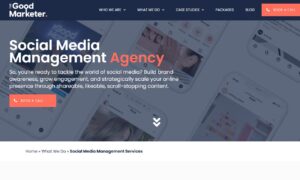As technology continues to evolve and user expectations grow, the field of UX design plays an increasingly crucial role in shaping digital experiences. In this rapidly changing landscape, staying updated on the latest trends and predictions is essential for UX designers looking to excel in their careers. This article will explore key trends and forecasts in the field of UX design for 2023 and beyond, highlighting how resources like UX Best Courses can help students find the right educational programs to prepare for the future.
The Rise of Voice User Interfaces (VUIs)
With the increasing popularity of voice-activated devices such as Amazon’s Alexa, Google Home, and Apple’s Siri, Voice User Interfaces (VUIs) are quickly becoming a vital aspect of UX design. This new mode of interaction offers users a more natural and efficient way to engage with technology, allowing them to communicate through speech rather than traditional input methods like typing or tapping. As voice technology continues to advance and become more ubiquitous, designers will need to adapt to this shift by focusing on creating seamless, natural, and intuitive voice experiences.
VUI design presents its own unique set of challenges, as it requires designers to consider factors such as voice recognition, user intent, and conversation flow. Designing a successful VUI involves understanding the nuances of human speech, creating contextually aware responses, and ensuring a smooth and enjoyable user experience. Moreover, designers must also account for accessibility and inclusivity, ensuring that voice interfaces are usable and beneficial for a diverse range of users, including those with disabilities.
Recognizing the growing importance of VUIs in the field of UX design, CareerFoundry offers a Voice User Interface Design specialization course within their main UX design program. This course aims to equip students with the necessary skills and knowledge to design successful VUIs, covering topics such as designing voice interactions, creating conversational scripts, and implementing best practices for voice usability.
By enrolling in the Voice User Interface Design specialization course, aspiring UX designers can stay ahead of the curve in this rapidly evolving area, ensuring they are well-prepared to create engaging and effective voice experiences for users. To gain a better understanding of what to expect from this course and how it can benefit aspiring UX designers, you can refer to this in-depth CareerFoundry UX Design Course review.
Increased Focus on Accessibility and Inclusivity
As the digital world becomes more intertwined with our daily lives, ensuring accessibility and inclusivity in UX design is essential. Designers must strive to create experiences that cater to users with different abilities, backgrounds, and needs. In 2023 and beyond, expect a growing emphasis on designing for diverse user groups. This includes considering factors such as color contrast, font size, and navigational elements to accommodate users with visual impairments, and incorporating alternative input methods for those with motor impairments. UX design courses that emphasize accessibility principles and best practices can empower designers to create more inclusive digital experiences for all users.
Ethical Design and Digital Wellbeing
As concerns around digital wellbeing and screen time become more prominent, UX designers will need to prioritize ethical design practices that emphasize users’ mental and emotional health. This may involve designing features that encourage breaks, limit addictive behaviors, and promote healthier digital habits. For example, apps might include “time spent” metrics, gentle nudges to take breaks, or content filters to reduce exposure to potentially harmful material. Quality UX design courses that address these complex ethical considerations can equip students with the tools needed to create responsible digital experiences that prioritize user wellbeing.
AI and Machine Learning in UX Design
The integration of artificial intelligence (AI) and machine learning in UX design will continue to grow, allowing designers to create more personalized, dynamic, and intelligent user experiences. Designers must familiarize themselves with these technologies and understand how to leverage them effectively in their work. Examples of AI and machine learning applications in UX design include chatbots, personalized content recommendations, and predictive text. By pursuing courses that introduce students to AI and machine learning principles, they can stay ahead of the curve in this exciting and innovative area.
The Shift Toward Multi-Device Experiences
As users increasingly engage with digital products across multiple devices and platforms, UX designers must focus on creating consistent, seamless experiences that adapt to different contexts. This may involve designing for various screen sizes, input methods, and user scenarios, ensuring a smooth transition between devices. For instance, designers need to consider how an app’s interface might change when transitioning from a smartphone to a tablet or a desktop, and ensure that interactions are optimized for touch, mouse, and keyboard inputs. Top UX design courses that cover responsive design techniques and platform-specific best practices can help students develop the skills required to design effective multi-device experiences.
Conclusion:
The world of UX design is constantly evolving, with new trends and technologies shaping the way designers create digital experiences. By staying informed on these trends and predictions, and pursuing relevant coursework found through resources like UX Best Courses, aspiring UX designers can ensure they are well-equipped to succeed in this dynamic field.

































